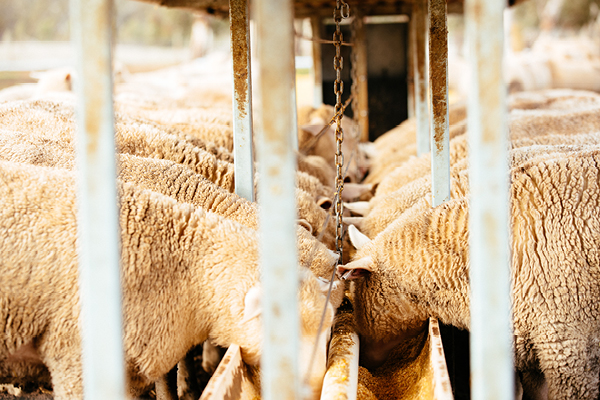Pellets, Crushed Grain Or Whole Grain, Which Is Best For You?
With the acquisition of Five Star Stock Feeds there is a complete range of feeds for your livestock, and you are blessed with options. Both sheep and cattle respond very well to pellets or processed grains. It is largely a matter of preference which way to go, but there are specific situations where one choice might be wiser than the other. Here are some things to consider.
What if I am Feeding Cattle? Sheep can handle and digest whole grains, but cattle cannot. When feeding cattle, the grain must be processed. Whether they eat a pellet or crushed grain is a matter of preference. Where you have both sheep and cattle you can feed cattle a sheep ration but sheep should not eat a cattle ration.
What if I am Feeding on the ground? Particle size is King when feeding on the ground. The larger the particle size the less wastage. This is where pellets shine out as the best choice. Sheep can be fed whole grain on the ground, but wastage is high.
What if I grow my own Grain? It is not unusual for farmers to have mixed cropping and livestock operations. There are a few options here. One is selling a load of your barley or wheat to us and backloading some pellets or crushed grain. Sometimes farmers have sophisticated feed systems that can process and mix their own cereal grains but require a Protein Mix to go with it. Both pellets and crushed grains are suitable for high protein mixes, and buffers, minerals and vitamins are added to the protein mix in the stockfeed mill.
My Silo has a Very Flat Cone? Some of the older silos were designed for storing whole grain rather than crushed grain or pellets. If the angle of the silos cone is 30 degrees or less, then grain mixes don’t flow very well. This can lead to an inconsistent feed coming out of the silo with some crushed grain mixes. This cannot happen with pellets. With pellets the last bight is the same as the first bight. Silos with steeper cones are no worries for crushed grains.
I have Lick Feeders in the Paddock? There is a very wide range of lick feeders out there and they all can do a good job. However, if the lick feeder restricts the ability of the animal to eat whole mouthfuls it does have implications for what might be the best feed to use. To swallow an animal must form a food and saliva spit ball (bolus) and that can be a problem with lick feeders. Pellets in lick feeders can be exposed to saliva while animals are attempting to get feed out of tightly closed lick feeders. Pellets can swell and stick together when exposed to excess moisture. If you use a tightly closed lick feeder you have two options. One might be using a crushed grain mix if you are unwilling to open the feeders up wide. The other is to remember the pellets are safe and open up the feeder to give animals better access.
What if I have Plenty of Grass? You might need vitamins and minerals instead of energy and protein when there is plenty of pasture. The “Rain Resistant Minerals plus Elitox” are formulated as a lick that animals can self-regulate on. Elitox is a substance that prevents ryegrass staggers and alkaloid poisoning from pastures. It also has sufficient calcium and magnesium to control grass tetany and milk-fever.
